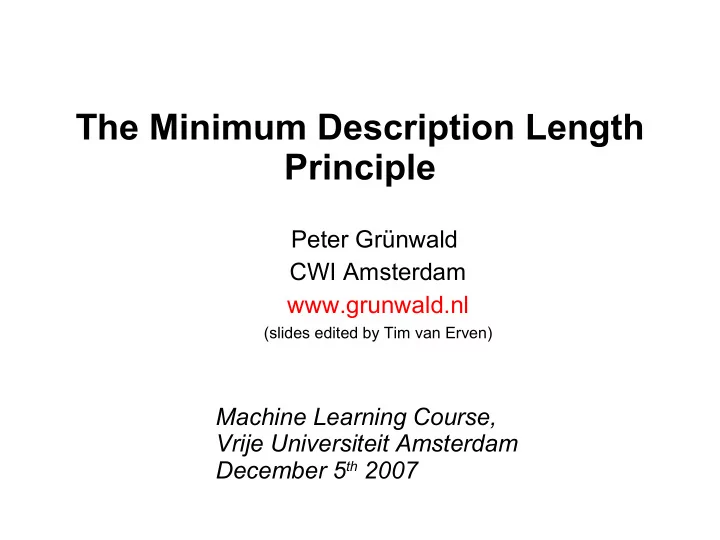

The Minimum Description Length Principle Peter Grünwald CWI Amsterdam www.grunwald.nl (slides edited by Tim van Erven) Machine Learning Course, Vrije Universiteit Amsterdam December 5 th 2007
Minimum Description Length Principle Rissanen 1978, 1987, 1996, Barron, Rissanen and Yu 1998 • ‘MDL’ is a method for inductive inference… – machine learning – pattern recognition – statistics • …based on ideas from data compression (information theory) • In contrast to most other methods, MDL automatically deals with overfitting, arguably the central problem in machine learning and statistics
Minimum Description Length Principle • MDL is based on the correspondence between ‘regularity’ and ‘compression’: – The more you are able to compress a sequence of data, the more regularity you have detected in the data – Example: 001 0010 0100 1001 0010 0100 1001 ::::0 01 010 1101 1100 1001 1101 0001 0101 ::::0 10
Minimum Description Length Principle • MDL is based on the correspondence between ‘regularity’ and ‘compression’: – The more you are able to compress a sequence of data, the more regularity you have detected in the data… – …and thus the more you have learned from the data: • ‘inductive inference’ as trying to find regularities in data (and using those to make predictions of future data)
Model Selection/Overfitting Given data D and hypothesis spaces/models , which model best explains M 1 , M 2, M 3 , the data ? – Need to take into account • Complexity of models • Error (minus Goodness-of-fit) – Example: • Selecting the degree of a polynomial in regression • Sum of squared errors
Example: Regression
Example: Regression
Example: Regression
Example: Regression
Example: Regression
Recommend
More recommend